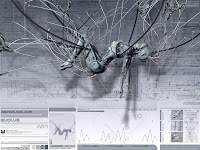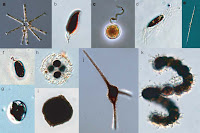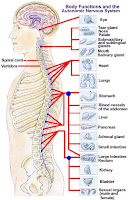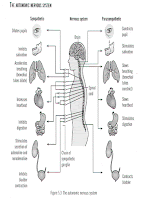What is stress?
Stress is a form of pain that comes to tell me there is something I need to change; Pain is a messenger that comes to tell me there is something I need to learn.
Stress has been defined as a person’s physical, mental and emotional reaction to daily events.
According to random house dictionary of English language defines stress as any stimulus, fear or pain that disturbs or interferes with the normal physiological equilibrium of an organism or physical, mental or emotional strain or tension. It is important for the students as well as the teachers in teaching learning process. If there is stress in any institutions the teaching learning process doesn't take place effectively so institutions should be free from any kind of tension or stress.
S=shock on the mind
T=Temper high or low
R= restlessness
E=emotionless
S=senseless
S= suicide
Stress at work, stress management techniques, stress reduction and relief
All the employers should provide a stress-free work environment, recognize where stress is becoming a problem for staff, and take action to reduce stress. Stress in the workplace reduces productivity, increases management pressures, and makes people ill in many ways, evidence of which is still increasing. Workplace stress affects the performance of the brain, including functions of work performance; memory, concentration, and learning.
Quick stress reduction techniques If you are stressed, do one or all of these things, in whatever order that takes your fancy. These ideas can also be adapted for team development exercises.
The key to de-stressing in the moment is getting away from or removing you from the stressor. Developing new habits which regularly remove you and distract you from stressors and stressful situations and pressures is essentially how to manage stress on a more permanent basis.
In this modern world it is difficult if not impossible to change stressful situations. What we can do however is change and reduce our exposure to those stressful situations.
These stress reduction ideas and techniques are based on that simple principle. These tips won't change the situation causing the stress, but they will, more importantly, enable you to change your reaction and relationship to the stressful situations.
And in keeping with the tone of this stress tips section, and since colour is regarded by many as a factor in affecting mood, the calming shade of green is used for the headings..
Stress reduction idea 1 - humour
Humor is one of the greatest and quickest devices for reducing stress.
Humor works because laughter produces helpful chemicals in the brain.
Humor also gets your brain thinking and working in a different way - it distracts you from having a stressed mindset. Distraction is a simple effective de-stressor - it takes your thoughts away from the stress, and thereby diffuses the stressful feelings.
Therefore most people will feel quite different and notice a change in mindset after laughing and being distracted by something humorous.
Go read the funny family fortunes answers. Or try the funny letters to the council. Even if you've seen them a hundred times before. As you start to smile and quiet laughter the stress begins to disperse.
If this material fails to make you laugh then find something which does.
Keep taking the laughter medicine until you feel suitably relaxed and re-charged.
Stress reduction idea 2 - brisk walk and self-talk
Go for a short quick really brisk walk outside.
Yes, actually leave the building.
Change your environment.
Breathe in some fresh air and smell the atmosphere...
Trees, rain, flowers, traffic fumes - doesn't matter - stimulate your senses with new things.
Stress reduction idea 3 - rehydrate
Go get a big cup or a bottle of water.
Here's why...
Most of us fail to drink enough water - that's water - not tea, coffee, coke, 'sports' drinks, Red Bull or fruit juice...
All of your organs, including your brain, are strongly dependent on water to function properly. It's how we are built.
If you starve your body of water you will function below your best - and you will get stressed. Physically and mentally.
Offices and workplaces commonly have a very dry atmosphere due to air conditioning, etc., which increases people's susceptibility to de-hydration.
This is why you must keep your body properly hydrated by regularly drinking water (most people need 4-8 glasses of water a day).
You will drink more water if you keep some on your desk at all times - it's human nature to drink it if it's there - so go get some now.
Stress reduction technique 4 - siesta or sleep
Take a quick nap. It is nature's way of recharging and re-energizing.
A quick 10-30 minutes' sleep is very helpful to reduce stress.
It's obviously essential if you are driving while tired, but a quick sleep is a powerful de-stressor too.
A lunchtime doze off is very practical for home-workers - it just requires the realization that doing so is acceptable and beneficial (when we are conditioned unfortunately to think that sleeping during the day is lazy, rather than healthy).
If your work situation is not quite ready to tolerate the concept of a daytime nap then practice a short session of self-hypnosis, combined with deep breathing, which you can do at your desk,. It works wonders.
Stress reduction technique 5 - make cups
Any tea will do, but a flavored cup of tea is even better.
Experiment with different natural flavorings using herbs and spices and fruit.
Fresh mint is wonderful, and excellent for the digestive system. Nettles are fantastic and contain natural relaxants. Orange zest is super .Ginger root is brilliant. Many herbs, spices, fruits and edible plants make great flavored tea, and many herbs and spices have real therapeutic properties.
Use a 'base' of green tea leaves - about half a spoonful per serving - plus the natural flavoring(s) of your choice, and freshly boiled water. Be bold - use lots of leaves - experiment until you find a blend that you really enjoy. Sugar or honey brings out the taste. Best without milk, but milk is fine if you prefer it.
Stress reduction technique 6 – crying
Golden rules of stress management
1) Be music lover
2) Share your stress with your mature person
3) Water therapy
4) Maintain a diary every day
5) See your face in mirror while in stress
6) Change the place for short time
7) Laugh at least once a day
8) Have proper diet ,sleep ,rest
9) Develop the habit of Raj yoga
10) To minimize anger, Keep silence
11) Drink water
2) Inculcate 3 A’s:
a) Avoid,,
b) Altar,
C) Accept
Share, share no doubt you can overcome the fear – Swami Vivekananda
Stress is not to borrow but to lend – Amitabh Bachhan
When you are in error
See your face in mirror
Past is history
Future is mystery
Present is the gift of time
Enjoy it and be fine - Mother Teresa
Stress can be managed by thinking positively
The meaning of positive thinking is
a)to look at the brighter side of the things,
b) -to think advantage of every event,
c) to learn something from everyone’s experiences
d) to be helpful,
e) to be proactive,-and
f) to focus on solution
An example of positive thinking : A person is breaking stone to build a temple when he was asked by a passerby he was very sad and angry and said I am breaking my luck ,asked another person in the same place doing the same work he answered I am working for a living and asked the third person he answered I am working hard to build a temple , it is a temple of god , it is my great pleasure to build a temple In this way we can see thing in different way, way of seeing things The third person has positive thinking but the first person has negative thinking about the same work .It means people perceive things from different angles. It depends upon the nature and way of thinking.
The thought process
1) Necessity thought : responsibility, information, experience
2) Waste thought : past, present, future
3) Negative thought : unrighteous, inauspicious, and degraded
4) Positive thought : elevated
Mind is the greatest but least understood energy resource of the universe
According to positive cycle if a person thinks, I can pass the exam he makes this vision, feels positively, then he acts, finally he passes the exam.
Tips for keeping outlook positive:
1 Think, speak and feel positive about yourself others and situations
2) Always visualize yourself and your life the way you want it
3) Set goals but remember you need goals not for what they get you but what they make
4) Don’t place limits yourself by saying I can’t
5) Let go in order to avoid hurting yourself and others
6) Discipline your mind sound intellect. As you decide what you put in there you determine what you get
7) See problems as appropriate to learn
8) Tackle problems one at a time then they are not so stressful.
9) Take out time for yourself as necessity and not as an option
10) Surround yourself with good people, people who support you in your efforts.
Illusion of stress:
1) You have to go to doctor to diagnose and treat stress.
2) Stress is normal part of everybody’s life
3) Some stresses are necessary in order to reach peak performance.
4) Other people’s situations and events are responsible for causing your stress
5) You have to be working 14 hours a day constantly meeting deadlines in order to experience stress.
Not much is known about the physiology of crying and tears, although many find that crying - weeping proper tears - has a powerful helpful effect on stress levels. Whatever the science behind crying, a good bout of sobbing and weeping does seem to release tension and stress for many people.
Of course how and where you choose to submit to this most basic of emotional impulses is up to you. The middle of the boardroom during an important presentation to a top client is probably not a great idea, but there are more private situations and you should feel free to try it from time to time if the urge takes you.
External stressor - physical conditions such as heat or cold, stressful psychological environments such as working conditions and abusive relationships, eg., bullying.
Internal stressors - physical ailments such as infection or inflammation, or psychological problems such as worrying about something.
From the above, it is easy to see that work can be a source of both external and internal stressors.Stressors are also described as either short-term (acute) or long-term (chronic):
Short-term 'acute' stress is the reaction to immediate threat, also known as the fight or flight response. This is when the primitive part of the brain and certain chemicals within the brain cause a reaction to potentially harmful stressors or warnings (just as if preparing the body to run away or defend itself), such as noise, over-crowding, danger, bullying or harassment, or even an imagined or recalled threatening experience. When the threat subsides the body returns to normal, which is called the 'relaxation response'. (NB The relaxation response among people varies; ie., people recover from acute stress at different rates.)
These are typical causes of stress at work:
Bullying or harassment, by anyone, not necessarily a person's manager
Feeling powerless and uninvolved in determining one's own responsibilities
Continuous unreasonable performance demands
Lack of effective communication and conflict resolution
Lack of job security
Long working hours
Excessive time away from home and family
Office politics and conflict among staff
a feeling that one's reward is not commensurate with one's responsibility
Working hours, responsibilities and pressures disrupting life-balance (diet, exercise, sleep and rest, play, family-time, etc)
Causes of stress
• Role overloaded
• Fear
• Health and sense of insecurity
• Over Ambition
• Environment Around
• Use of chemicals
• Changing society and family disputes source force ,recommendation ,Nepotism, political Prejudice
Symptoms of stress according to Hanse syle
1. Alarm
2. Adaptation
3. Exhaustion
4. Termination
Psychological Symptoms
1. Loneliness
• Unusual eyes movements
• Turning of eye lid hairs
• Forth while speaking
• Grumble walking
• Serious aloof
2. Tiredness
• Continuous movements of fingers
• Regular yawning
• Falling asleep time and again
• Grind teeth while asleep
3. Lack of concentration
• No interest in single work
• Increase restlessness of mind
• Loss of memory
• Forget even a very important work
• Feeling of heaviness
4. Lack of laughter
• Mental conflict with oneself
• Lack of mutual love
• Feeling of eternal scarcity
• Belief in artificial life
• Imbalanced life
• No knowledge of laughter
5. Fear and insecurity
• Recollection of past mistakes time and again
• Tendency to conceal the crimes and weaknesses
• Lack of self confidence
• Sense of uncertainty of future
• Inability to express emotions and feelings
6. Anorexia
• Being too much busy
• Use of high dose medicine for a long time
• Sense of anger an revenge
• Secretion of unnecessary hormones
• Imbalanced life styles
• Mental tension
•
7. Instable nature
• Frequent excitement and disappointment
• Sentimental and emotional
• Furious and irritating
• Obstinate
• Fail to keep words and decisions
8) Hypertension
• Excessive use of drugs
• Ulcer ,gastric
• Mental disturbance
• Heart disease and irritation
• Negligence in clothing food and activities
9) Immune deficiency due to stress
Factors influencing the effects of stress and stress susceptibility:
A person's susceptibility to stress can be affected by any or all of these factors, which means that everyone has a different tolerance to stressors. And in respect of certain of these factors, stress susceptibility is not fixed, so each person's stress tolerance level changes over time:
Childhood experience (abuse can increase stress susceptibility)
Personality (certain personalities are more stress-prone than others)
Genetics (particularly inherited 'relaxation response', connected with serotonin levels, the brain's 'well-being chemical')
Immunity abnormality (as might cause certain diseases such as arthritis and eczema, which weaken stress resilience)
Lifestyle (principally poor diet and lack of exercise)
Duration and intensity of stressors (obviously...)
Signs of stress - stress test
You can use this list of ten key stress indicators as a simple initial stress test: tick the factors applicable. How did I do?
Sleep difficulties
Loss of appetite
Poor concentration or poor memory retention
Performance dip
Uncharacteristic errors or missed deadlines
Anger or tantrums
Violent or anti-social behavior
Emotional outbursts
Alcohol or drug abuse
Nervous habits
Methods of personal stress management and stress relief
If you are suffering from work-related stress and it's beginning to affect, or already affecting your health, stop to think: why are you taking this risk with your body and mind? Lives short enough as it is; illness is all around us; why make matters worse? Commit to change before one day change is forced upon you.
If you recognize signs of stress in a staff member, especially if you are that person's manager, don't ignore it - do something about it. It is your duty to do so. If you do not feel capable of dealing with the situation, do not ignore it; you must refer it to someone who can deal with it. You must also look for signs of non-work-related stressors or factors that increase susceptibility to stress, because these will make a person more vulnerable to work-related stressors. These rules apply to you as well....
Stress relief pointers
Think really seriously about and talk with others, to identify the causes of the stress and take steps to remove, reduce them or remove you (the stressed person) from the situation that causes the stress.
.improve diet - group B vitamins and magnesium are important, but potentially so are all the other vitamins and minerals: a balanced healthy diet is essential. Assess the current diet and identify where improvements should be made and commit to those improvements.
Reduce toxin intake - obviously tobacco, alcohol especially - they might seem to provide temporary relief but they are working against the balance of the body and contributing to stress susceptibility, and therefore increasing stress itself.
Take more exercise - generally, and at times when feeling very stressed - exercise burns up adrenaline and produces helpful chemicals and positive feelings.
Stressed people must try to be detached, step back, look from the outside at the issues that cause the stress.
Don’t try to control things that are uncontrollable - instead adjust response, adapt.
Share worries - talk to someone else - off-load, loneliness is a big ally of stress, so sharing the burden is essential.
Increase self-awareness of personal moods and feelings - anticipate and take steps to avoid stress build-up before it becomes more serious.
Explore and use relaxation methods - they do work if given a chance - yoga, meditation, self-hypnosis, massage, a breath of fresh air, anything that works and can be done in the particular situation.
seek out modern computer aids - including free downloads and desktop add-ons - for averting stresses specifically caused by sitting for long uninterrupted periods at a computer screen work-station, for example related to breathing, posture, seating, eye-strain, and RSI (repetitive strain injury).
, Vitamin C is essential to protect against stress too: it maintains a healthy immune system, which is important for reducing stress susceptibility (we are more likely to suffer from stress when we are ill, and we are more prone to illness when our immune system is weak). Vitamin C speeds healing, which contributes to reducing stress susceptibility? Vitamin C is associate with improving post-traumatic stress disorders and chronic infections.
Vitamin D helps maintain healthy body condition, particularly bones and speed of fracture healing, which are directly linked to stress susceptibility.
A proper balanced diet is clearly essential, both to avoid direct physical stress causes via brain and nervous system, and to reduce stress susceptibility resulting from poor health and condition. Toxins such as alcohol, tobacco smoke; excessive salt, steroids, other drugs and other pollutants work against the balance between minerals, vitamins mind and body. Obviously then, excessive toxins from these sources will increase stress susceptibility and stress it. (Useful information about salt and steroids.)
Sleep and rest are essential for a healthy life-balance.
We have evolved from ancestors whose sleep patterns were governed by and attuned to nature. We are born with genes and bodies which reflect our successful evolutionary survival over tens of thousands of years. Our genes and bodies do not reflect the modern world's less natural way of life.
Having a good night's sleep is vital for a healthy mind and body.
Napping during the day is also healthy. It recharges and energizes, relaxes, and helps to wipe the brain of pressures and unpleasant feelings.
Physical exercise is immensely beneficial in managing stress. This is for several reasons:
Exercise releases helpful chemicals in our brain and body that are good for us.
Exercise distracts us from the causes of stress.
Exercise warms and relaxes cold, tight muscles and tissues which contribute to stress feelings.
Exercise develops and maintains a healthy body which directly reduces stress susceptibility.
Exercise increases blood flow to the brain which is good for us. Exercises also releases hormones, and stimulate the nervous system in ways that are good for us. Exercise produces chemicals in the body such as beta-endorphin, which is proven to have a positive effect on how we feel. For many people, serious exercise produces a kind of 'high'. (It's arguable that it has this effect on everyone, but not since so many people never get to do any serious exercise they'll never know.......). Scientists still don't fully understand how exactly these effects happen, but we do know that exercise produces powerful feelings of well-being and a physical glow, both of which directly reduce stress feelings.
Anger management and stress
The term 'anger management' is widely use now as if the subject stands alone. However, 'anger management' is simply an aspect of managing stress, since anger in the workplace is a symptom of stress. Anger is often stress in denial, and as such is best approached via one-to-one counseling. Training courses can convey anger management and stress reduction theory and ideas, but one-to-one counseling is necessary to turn theory into practice. Management of anger (and any other unreasonable emotional behavior for that matter) and the stress that causes it, can only be improved if the person wants to change - acceptance, cognizance, commitment - so awareness is the first requirement. Some angry people take pride in their anger and don't want to change; others fail to appreciate the effect on self and others. Without a commitment to change there's not a lot that a manager or employer can do to help; anger management is only possible when the angry person accepts and commits to the need to change.
Ideas for stress relief - especially for workers at particular risk
Many workers in the healthcare professions are at particular risk from stress and stress-related performance issues (absenteeism, attrition, high staff turnover, etc). Other sectors also have staff that is at a higher risk than normal from the effects of work-related stress.
It is the duty of all employers to look after these people. The solutions are more complex than blaming people for not being able to cope, or blaming the recruitment selection process.
In these situations it is often assumed that better selection of (more resilient) new recruits is the solution. However, the challenge is two-fold - identifying best new candidates, and more importantly: helping and supporting staff in their roles.
In terms of identifying best new candidates, look at Emotional Intelligence methodology. The ability to absorb high levels of stress and pressure is governed largely by emotional maturity and personal well-being, which to an extent are reflected in the EQ model.
Television, films, computer games - mood influencing stress factors
In the same way that 'you are what you eat' recent research suggests that also 'you are what you watch'.
Given how the brain works it is logical - and increasingly proven - that if you subject yourself to miserable, negative experiences portrayed on film and television, and computer games, that you will feel unhappy or even depressed as a result. Negative, violent, miserable images, actions, language and sounds are in effect a form of negative conditioning. They produce stress, anxiety, and actually adversely affect a person's physical health.
Evidence is growing that positive or negative images and sounds have a corresponding positive or negative affect on your physical health and well-being. Watching or violent or miserable TV, films or playing violent computer games are experiences now proven to have a directly negative effect on a person's physical health, as well as mental state.
Conversely, watching or listening to an amusing experience or portrayal in a variety of media (TV, film, even books) has a beneficial effect on your mood, and thereby will tend to improve your physical health, mental state, and reduce your stress levels.
Negative viewing and game-playing experiences are bad for you. Positive, funny experiences are good for you.
Think about and control the influences upon you - reduce the negatives and increase the positives - and you will improve your physical and mental health, and you will most certainly reduce your stress levels.
Physical signs of stress: at work place and at home
a)High blood pressure,
b) Abdominal pain,
c) Stammering,
d) Diarrhea,
e) Sweating,
f) Chronic
g) Fatigue
h) Body ache
i), Arthritis
j) ,alcoholism,
k) Insomnia,
k) Headache,
Stress reduces immunity power to various illnesses
Stress at home and at work;
Divorce, marriage,
Money,
Selling home
Buying home,
Children
Difficulties with in law
Bing tired,
Competing with colleagues,
Conflict with colleague,
Demonstration
Excessive work,
Noisy environment
Over qualified,
New job
,
Environment,Science, Technology, News, Research, Invention,mythology,practical,health,knowledge,magazine,fusion,physics,chemistry, mathematics, biology, disaster, diseases,How does rainbow forms,logic circuits,Inspirational Nature Quotes,Environmental chemistry, important topics on electrical and electronics,disaster planning, ...
Saturday, July 23, 2011
Sunday, July 10, 2011
optics.com

Plane polarized light:
when light travels along a certain direction the vibration takes place in a direction at right angles to the direction of propagation. If the vibration of the ether particles are linear and take place parallel to a plane through the axis of the beam or the direction ofpropagation,light is said to be "plane polarized."
Huygen's theory of Double refraction:
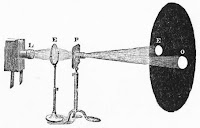
Huygen's theory states that every point on a wave front is a source of secondary wavelets which radiates in all direction from their centres with the speed of the propagation of wave. The wave front is the envelop of the secondary wavelets. If we imagine a point source within the uniaxial Crystal(calcite), the wave front at any time correspnding to the O-rays is a sphere about the point as centre and the wave front corresponding to the E-rays is spheroid because the E-rays have minimum velocity along optic axis and minimum velocity in all direction
perpendicular to the optic axis.
Fraunhofer and Fresnel diffraction:
In the Fraunhofer diffraction, the source of the light and the screen are effectively at infinite distance from the diffracting obstacle or aperture. This is achieved by placing the source and the screen in the focal planes of two lenses. In this case the incident wave frony is plane.
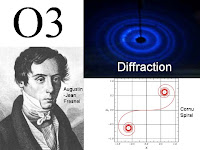
In the Fresnel's diffraction, the source of light and screen on which diffraction pattern is observed are finite distances from obstacle or aperture. In this case no lenses are used. In this case the incident wave front is either spherical or cylindrical.
Spontaneous Emission:

When an atom in an excited state (higher state) E2 jumps to the lower energy state E1 by emitting a photon of frequency v, the process is known as spontaneous emission. If there is an assembly of atoms, the radiation emitted spontaneously by each atom has a random direction and a random phase and is therefore incoherent from one atom to
another.
Stimulated Emission:

When an atom in an excited state E2 interacts with an incident photon of right frequency v and is there by induced to move to ground state E1 by emitting the difference of energy of a photon of same frequency v, the process is known as stimulated emission.
Dichonism:
Some doubly-refracting crystals have the properly of absorbing strongly one of the two refracting rays, while allowing the other to emerge with little loss. This selective absorbtion by the crystal is known as "dichonism". The best example of such crystal is tourmaline.
Interference of light:
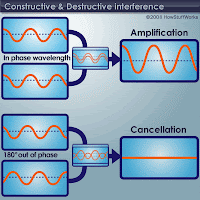
When two wave of same frequency travel in approximately the same direction and have a phase difference that remain constant with time, the resultant intensity of light is not distibuted uniformly in space. The non uniform distribution of light intensity due to the superposition of two wave is called interference. At same points the intensity is a maximum,and the interference at these points is called "Constructive interference". At other some point the intensity is minimum, and the interference at these points is called destructive interference.
Wednesday, July 6, 2011
Air Standard Cycles

Introduction:
Due to the circulation of the working fluid inside the cycle Carnot Cycle, Stirling Cycle, Brayton Cycle are called closed cycles. And they are called external combustion engine because the addition of heat takes place externally in these cycles.
In our daily life we most commonly use practical engines are internal combustion engines for our vehicles, motorcycles, construction machineries, etc.
The internal combustion engines or IC engines are those in which the combustion of fuel takes place inside the engine. They are composed of piston and cylinder arrangement with suction and exhaust valves.
At the very beginning of the internal combustion cycle, the mixture of air and fuel is inducted inside the cylinder. A lot of heat is released when the fuel is combusted, which over heat the engine cylinder.
Hence to avoid the destruction of the engine , it is necessary to make engine cool either with water or with the external air.then the pressure of the gases also becomes very highhence pushes the piston producing work.
After that, the burnt gases are released to the environment as the exhaust gases and again the fresh mixture of air and fuel is injected inside the cylinder.
Because of releasing burnt gases and injecting fresh air, the internal combustion engines are said to be working in non-cyclic process.
Air Standard cycles and concept:
It doesn`t matter how the engine works (cyclic or non-cyclic), the analysis should be done on the input and output of the system.thus the air standard cycles was concieved to carry out those analysis.usually certain mass of the air is considered to be working inside the thermodynamic cycle and ideally all the processes are reversible.
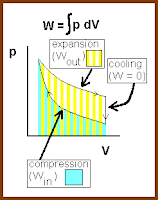
Acctually, the internal combustion engines work on the principle of air standard cycles. The most commonly used air standard cycles are Otto cycle which corresponds to 4-stroke petrol or gasoline engine also called spark Ignition Engine and Diesel cycle which corresponds to 4-stroke Diesel Engines so called Compression Ignition Engines.
Tuesday, July 5, 2011
Applied Mechanical Equipment
Introduction:
It is defined as the science which describes and predicts the condition of rest or motion of bodies under the action of forces.
Types:
(A) Mechanics of rigid bodies:
(a) Statics: It is the branch of mechanics of rigid bodies which deals with the forces and the effect by the action upon the bodies at rest.
(b) Dynamics: It is the branch of mechanics of rigid bodies which deals with the forces and their effects by the action upon the bodies in motion.
(i) Kinetics: That branch of dynamics which deals with the bodies in motion due to the application of forces.
(ii) Kinematics: It is that branch of dynamics which deals with bodies in motion without any reference to forces which are responsible for motion.
Rigid Body:
It is a body which can retain its shape and size even if subjected to external courses. In reality, all bodies change their shape and size on the application of force. However, changes are so small that they are assumed to be perfectly rigid body.
Deformable Body:
If appreciable change occurs in shape and size of a body by applying force, it is called a deformable body.
Particle:
It is a material of a body which is so small that its dimension may be treated as negligible compare to other`s dimension. Mass of particle may be assumed to be concentrated at a point and a particle is sometimes called a mass point.
System of units:
There are 4 system of units commonly used;
* CGS Unit ( Centimeter, Gram, Second)
*FPS Unit ( Foot, Pound, Second)
*MKS U nit (Meter, Kilogram, Second)
*SI Unit.
It is defined as the science which describes and predicts the condition of rest or motion of bodies under the action of forces.
Types:
(A) Mechanics of rigid bodies:
(a) Statics: It is the branch of mechanics of rigid bodies which deals with the forces and the effect by the action upon the bodies at rest.
(b) Dynamics: It is the branch of mechanics of rigid bodies which deals with the forces and their effects by the action upon the bodies in motion.
(i) Kinetics: That branch of dynamics which deals with the bodies in motion due to the application of forces.
(ii) Kinematics: It is that branch of dynamics which deals with bodies in motion without any reference to forces which are responsible for motion.
Rigid Body:
It is a body which can retain its shape and size even if subjected to external courses. In reality, all bodies change their shape and size on the application of force. However, changes are so small that they are assumed to be perfectly rigid body.
Deformable Body:
If appreciable change occurs in shape and size of a body by applying force, it is called a deformable body.
Particle:
It is a material of a body which is so small that its dimension may be treated as negligible compare to other`s dimension. Mass of particle may be assumed to be concentrated at a point and a particle is sometimes called a mass point.
System of units:
There are 4 system of units commonly used;
* CGS Unit ( Centimeter, Gram, Second)
*FPS Unit ( Foot, Pound, Second)
*MKS U nit (Meter, Kilogram, Second)
*SI Unit.
Subscribe to:
Posts (Atom)

